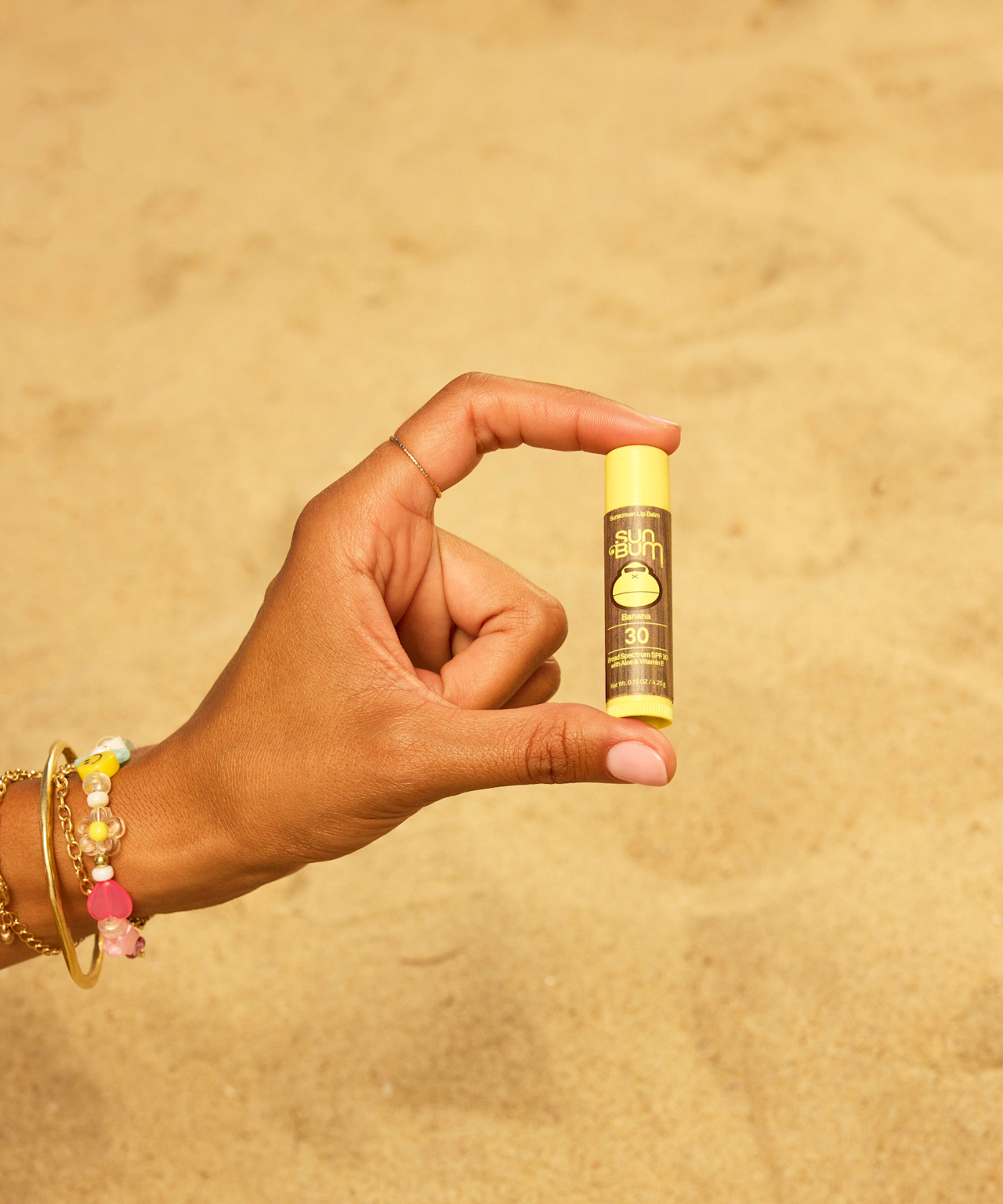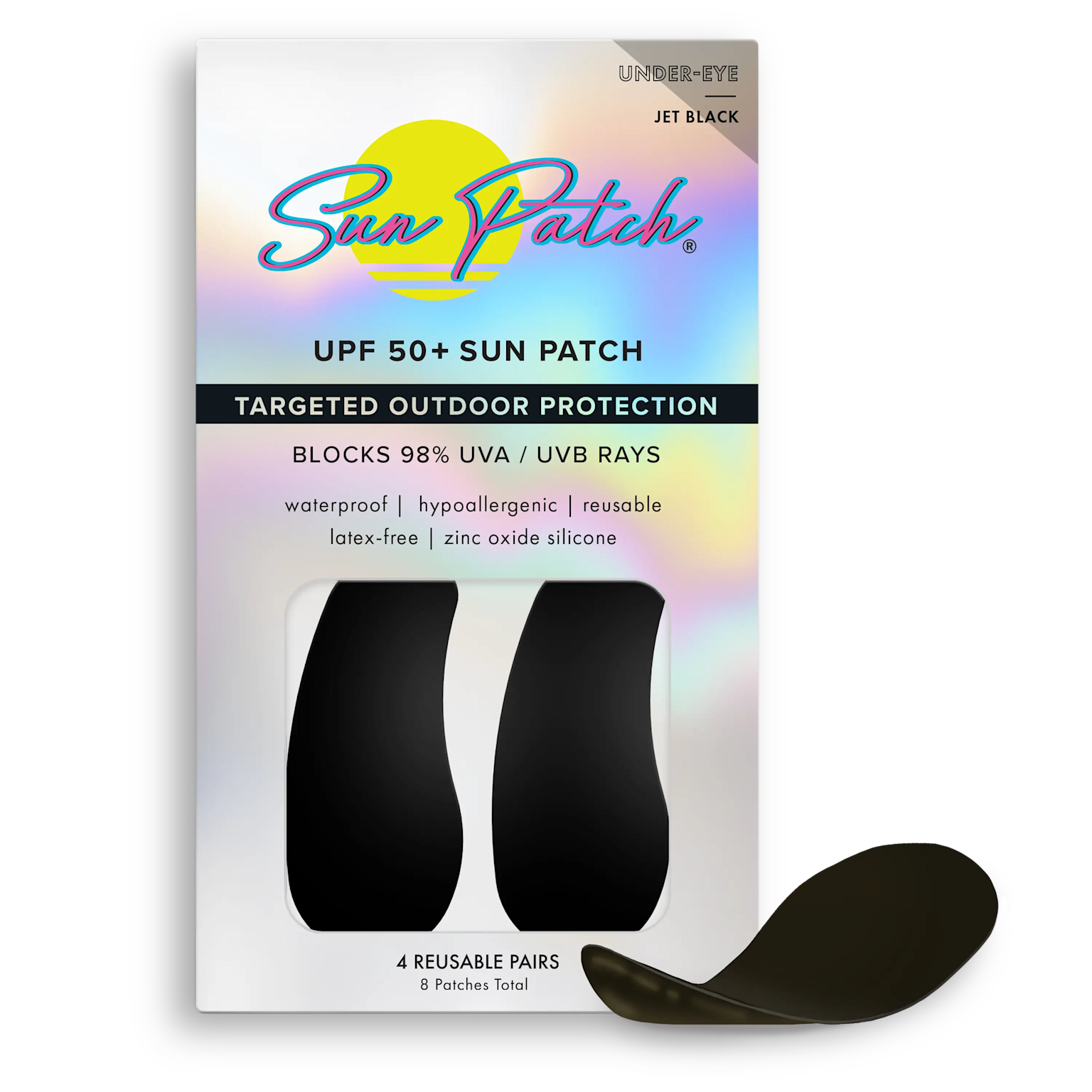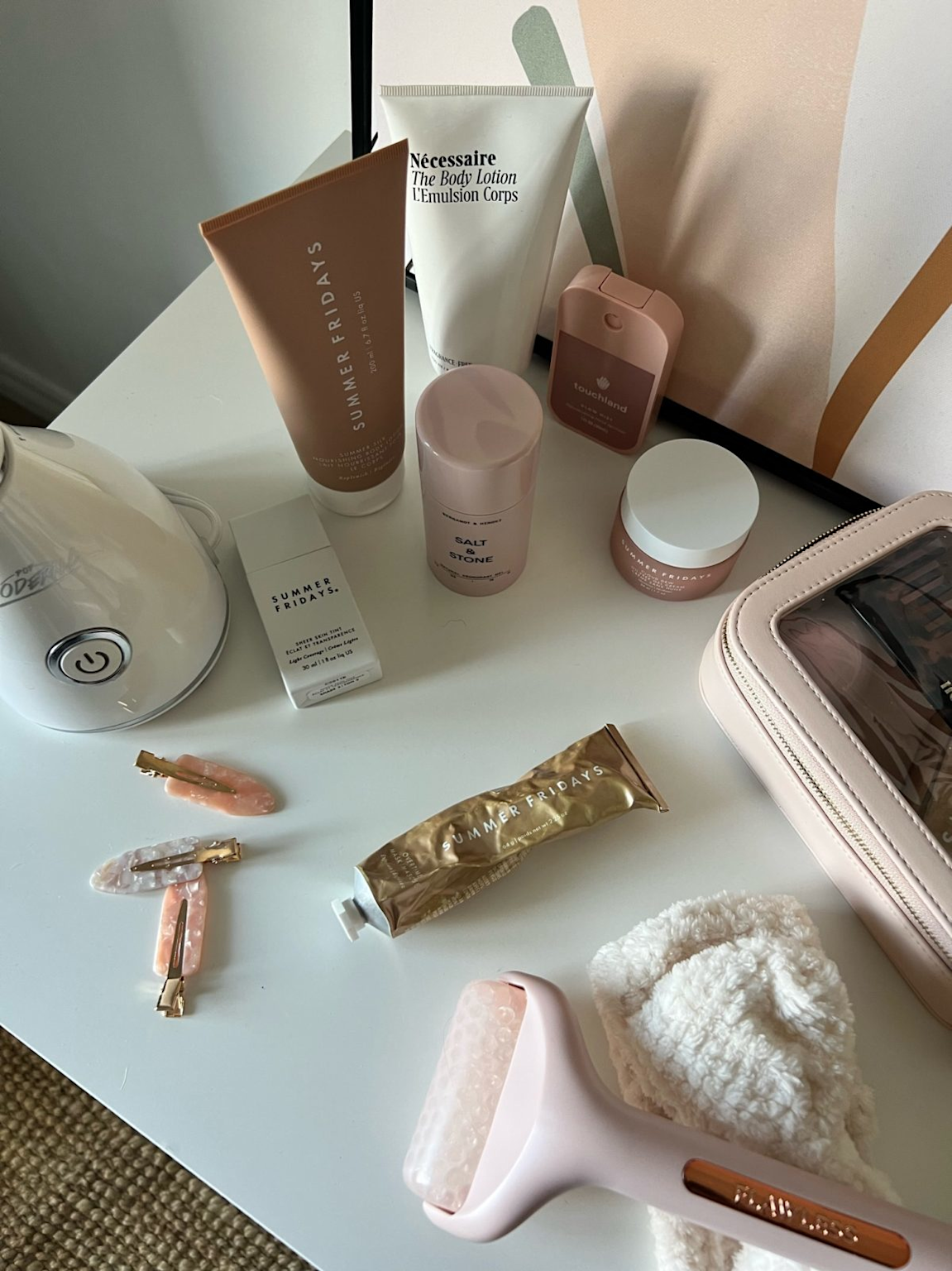Why Everyone Is Obsessing Over Tinted SPFs and Lip Sunscreens: The UV Protection 2.0 Revolution
Tinted sunscreens and lip SPFs are driving "UV Protection 2.0," merging beauty and sun protection, fueled by social media and innovative formulations.
The beauty landscape is experiencing a seismic shift as tinted sunscreens and lip SPFs dominate social media feeds, beauty counters, and skincare routines worldwide. This isn't just another fleeting trend-it represents the evolution of sun protection into what experts are calling "UV Protection 2.0," where effectiveness meets aesthetics in unprecedented ways. With tinted SPF demand surging 87% year-over-year[^1] and TikTok interest skyrocketing 188% compared to 2024[^1], we're witnessing a fundamental reimagining of how millennial women approach daily sun care.
This revolution extends far beyond traditional sunscreen, encompassing innovative under-eye UV patches, SPF-infused lip oils, and mineral formulations that seamlessly blend protection with beauty enhancement. The market is responding with remarkable velocity-the global tinted sunscreen market is projected to nearly double from $2.5 billion in 2023 to $4.8 billion by 2032[^2], while the sunscreen lip balm sector is expected to grow from $300 million in 2024 to $500 million by 2033[^3][^4].

Market Growth Projections for UV Protection 2.0 Segments
The Social Psychology Behind the Search
The "No-Makeup Makeup" Movement Drives Demand
The surge in tinted SPF popularity directly correlates with the "skinimalism" and "no-makeup makeup" movements that have captivated Gen Z and millennial consumers[^1][^5]. This aesthetic philosophy prioritizes natural-looking enhancement over heavy coverage, making tinted sunscreens the perfect marriage of protection and perfection.
Akshay Talati, Chief Innovation Officer at Supergoop!, explains: "Consumers want to simplify their routines with products that protect, perfect, and perform all in one. With the rise of the 'no make-up make-up' trend, searches for tinted SPFs have surged"[^1]. This sentiment reflects a broader shift toward multifunctional beauty products that serve multiple purposes while maintaining an effortless aesthetic.
Social Media Amplifies the Trend
The digital beauty ecosystem has become the primary driver of sunscreen innovation and adoption. Research analyzing TikTok's sunscreen content reveals that 38.7% of creators are beauty bloggers, while only 16.6% are board-certified dermatologists[^6][^7]. This creates a unique dynamic where aesthetic appeal often trumps medical expertise in driving consumer behavior.
Google Trends data shows that searches for "tinted moisturizer with SPF" peaked at 99 in June 2025[^8], coinciding with summer skincare preparation. Meanwhile, TikTok engagement with tinted SPF content has increased dramatically, with beauty influencers showcasing application techniques and reviewing formulations that offer "vacation skin in five seconds flat"[^9].

Social Media Trends and Content Creator Breakdown for Sunscreen Content
UV Protection 2.0: Where Technology Meets Aesthetics
Revolutionary Formulation Innovations
The latest generation of UV protection represents a quantum leap from traditional sunscreens. Shiseido's breakthrough mineral sunscreen technology creates protective films that provide "transparent, uniform finishes while offering high UV protection"[^10]. This innovation increases UV protection by up to 2.2 times compared to conventional formulations while eliminating the dreaded white cast that has historically plagued mineral sunscreens[^10].
Similarly, Kao Corporation's UV absorber-free technology addresses the growing consumer demand for gentler formulations. Their research indicates that over 30% of consumers view gentleness as the most important sunscreen attribute[^11], leading to innovations in water-based formulations that provide "strong UV protection, no white cast, and light texture"[^11].
Smart Responsive Technologies
The future of sunscreen includes humidity-responsive and self-repairing formulations. Kao's new "Humidity-Responsive UV Protection Film Technology" creates sunscreens with "light and airy textures" that "absorb and release moisture along with changes in humidity"[^12]. Meanwhile, Shiseido's "Automatic Veil Technology" allows application films to automatically repair micro-level nicks and scrapes, preventing UV protection reduction caused by facial expressions or touch[^13].
Cooling and Comfort Innovations
Breakthrough research has produced SPF 50 sunscreen formulas that actively cool the skin. Using radiative cooling technology, these formulations keep skin up to 11 degrees Fahrenheit cooler than bare skin, addressing the discomfort that has traditionally deterred consistent sunscreen use[^14].
The Lip Sunscreen Boom: Protecting Fashion's Forgotten Area
Market Explosion and Consumer Awakening
The sunscreen lip balm market is experiencing unprecedented growth, valued at $300 million in 2024 and projected to reach $500 million by 2033 with a 5.8% CAGR[^3][^4]. This expansion reflects increased awareness that lip cancer accounts for a significant portion of facial skin cancers, with the American Academy of Dermatology reporting that "around 1 in 5 Americans will develop skin cancer by the age of 70"[^3].
Modern lip SPF formulations now incorporate natural ingredients like beeswax, shea butter, and plant extracts, appealing to the environmentally-conscious demographic that prioritizes clean beauty[^3][^15]. The trend toward organic components resonates with consumers who are "increasingly focused on sustainability" while maintaining product efficacy[^3].
Innovation in Application and Experience
The latest lip sunscreen innovations extend beyond basic protection. SPF lip oils are emerging as a major trend for 2025[^16], combining the glossy aesthetic millennials love with broad-spectrum protection. These formulations often include aromatherapeutic scents and functional fragrances that enhance the emotional experience of application[^17].
Reapplication convenience remains crucial, with brands developing portable formats and long-lasting formulas that align with busy lifestyles. The integration of moisturizing properties ensures that lip SPF products serve multiple functions, supporting the skinimalism trend[^18][^19].

Eye Area Innovations: The New Frontier of UV Protection
The Delicate Eye Area Challenge
The eye area skincare market is projected to grow from $14.2 billion in 2023 to $23.4 billion by 2033[^20], driven partly by increasing awareness of UV protection needs around this delicate region. Board-certified dermatologist Corey L. Hartman explains: "The skin around the eye is thinner than the rest of the skin on the face, and neglecting to apply sunscreen around the eye area can worsen common complaints like dark circles, hyperpigmentation, and puffiness"[^21].
Revolutionary Patch Technology
UV protection patches represent the cutting edge of targeted sun protection. The UV protection patches market is experiencing robust growth, estimated at $500 million in 2025 and projected to reach $1.8 billion by 2033 with a 15% CAGR[^22]. These innovations offer 98% UVA and UVB ray blocking while providing "waterproof and rub-resistant" coverage for up to 12 hours[^23][^24].
Korean beauty brands are leading this innovation, with patches featuring "cooling hydrogel cores" and "antioxidant-infused formulations" that include hyaluronic acid, watermelon extract, and ceramides[^25]. These products address the growing consumer desire for "convenient, discreet sun protection solutions"[^22].
Specialized Eye SPF Formulations
Mineral-based eye SPFs are gaining prominence due to their gentler formulation compared to chemical alternatives. Ultrasun's SPF 30 Eye Protection provides "over 85% UVA protection" while incorporating anti-aging actives like Coenzyme Q10 and GSP-T antioxidant complex[^26]. These formulations offer "brightening, support, and smoothing" effects while delivering comprehensive UV defense[^26].

Sun Patch under-eye UV protection patches block 98% of UVA/UVB rays with reusable, waterproof, and hypoallergenic design.
Consumer Psychology: The Compensatory Skincare Phenomenon
Understanding Millennial Behavior Patterns
The rise of "compensatory psychology skincare" helps explain the tinted SPF obsession. This concept describes skincare approaches driven by guilt, where consumers use intensive treatments to counteract perceived skin damage from lifestyle choices[^27]. Tinted sunscreens perfectly address this psychology by providing immediate aesthetic gratification while delivering long-term protection.
Gen Z and millennial consumers demonstrate "split consumption logic"-balancing frugality with indulgence when it comes to skincare[^27]. They're willing to invest in premium tinted SPF products that deliver both emotional satisfaction and functional benefits, making these products ideal for this demographic's purchasing patterns.
The Influence of Social Media Psychology
TikTok's beauty ecosystem creates unique psychological drivers for product adoption. Research shows that beauty influencers significantly impact consumer choices, with their endorsements shaping trends more than traditional advertising[^17]. The platform's emphasis on "before and after" transformations makes tinted SPFs particularly appealing, as they provide instant visual improvement while promising long-term benefits.
Scented sunscreen trends also play a psychological role, with gourmand fragrances like vanilla and caramel becoming increasingly popular among Gen Z consumers[^17]. These sensory experiences transform routine sun protection into indulgent self-care rituals.
Summer Aesthetics: The Perfect Storm of Beauty and Protection
The Clean Girl Evolution
The "Clean Girl" aesthetic has evolved into what experts call "Skinimalism 2.0"-a more sophisticated approach that maintains the natural, effortless look while incorporating advanced formulations[^5]. Hybrid products merging makeup with skincare are the stars of this movement, with skin tints that double as SPF leading the charge[^5].
Modern minimalist beauty focuses on "enhancing what you have" rather than masking imperfections[^5]. This philosophy aligns perfectly with tinted sunscreens, which provide sheer coverage, sun protection, and skincare benefits in a single application.
The Aesthetic Technology Integration
Color-matching technology and adaptive formulations are revolutionizing tinted SPF accessibility. Brands are expanding shade ranges dramatically-Merit's The Uniform offers a "curated range of lightweight shades designed to blend seamlessly across skin tones"[^28], addressing historical criticisms about limited inclusivity in tinted products.
Texture innovations focus on creating "second-skin" finishes that photograph well for social media. Formulations now feature "natural, satin-like glows" that "dry as light as air"[^28], perfect for the Instagram-ready aesthetic that drives millennial purchasing decisions.

Flat lay of tinted skincare and sun protection products emphasizing summer aesthetics and self-care essentials.
The Science of Summer: UV Protection Meets Beauty Chemistry
Advanced Mineral Technologies
The latest mineral sunscreen innovations address traditional shortcomings while maintaining reef-safe formulations. Searches for "reef-safe SPF" have risen 86% year-over-year[^8], indicating growing environmental consciousness among consumers.
Next-generation mineral formulations utilize particle optimization to eliminate white cast while maintaining broad-spectrum protection. These advances enable "transparent finishes" that satisfy both aesthetic preferences and environmental values.
Multifunctional Ingredient Integration
Modern tinted SPFs incorporate skincare actives like hyaluronic acid, niacinamide, and antioxidants to provide anti-aging benefits alongside sun protection[^1]. This "skincare-infused makeup" approach appeals to consumers seeking maximum efficiency from their beauty routines.
Peptide technology is also emerging in SPF formulations, with these collagen-boosting ingredients reaching nearly 150,000 Google searches and projected to be "on everyone's lips (and eyes, skin...) next year"[^29].
Market Dynamics: The Economics of Aesthetic Protection
Growth Trajectory Analysis
The compound market growth across UV protection segments indicates sustained consumer commitment to this trend. Tinted sunscreen market growth at 7.5% CAGR[^2] outpaces traditional sunscreen growth, suggesting permanent behavioral shifts rather than temporary fashion.
Regional variations show Asia Pacific leading with 35.3% market share[^30] in related eye care categories, while North America dominates UV protection patches[^31] due to high consumer awareness and purchasing power.
Distribution Channel Evolution
E-commerce growth facilitates wider product access, with online retail platforms allowing "easier access to a wider range of sunscreen lip balms"[^15]. Digital marketing and influencer partnerships drive significant portions of sales, particularly for Instagram-friendly packaging and TikTok-viral formulations.
Future Outlook: Where UV Protection 2.0 Is Heading
Technological Integration
AI-driven customization represents the next frontier, with "personalized SPF recommendations via apps"[^32] emerging as potential competitive advantages. Smart technology integration could include UV exposure monitoring and real-time reapplication reminders.
Sustainability innovations will likely dominate future development, with biodegradable packaging and fermentation-derived ingredients becoming standard rather than premium features[^17].
Consumer Behavior Evolution
Predictive modeling suggests 10-12% year-over-year growth in tinted sunscreen sales through 2026, with shade-inclusive products capturing 20% of market share by 2030[^8]. This growth reflects permanent behavioral changes rather than cyclical trends.
Wellness integration will continue expanding, with beauty merging with overall wellness through aromatherapy benefits, stress-reduction properties, and sleep quality enhancement[^29].
Conclusion: The New Standard of Beautiful Protection
The convergence of UV Protection 2.0 technology with summer aesthetics represents more than a trend-it's a fundamental reimagining of daily beauty routines. Tinted SPFs, lip sunscreens, and innovative eye protection products have successfully merged scientific advancement with aesthetic appeal, creating products that consumers actually want to use consistently.
This movement addresses the core psychological barriers that have historically impeded sun protection adoption: inconvenience, aesthetic compromise, and sensory displeasure. By solving these issues through advanced formulations, appealing textures, and multifunctional benefits, the industry has created sustainable behavioral change rather than temporary compliance.
For millennial women, these innovations represent the perfect alignment of health consciousness, aesthetic preferences, and lifestyle efficiency. The social media amplification of these products demonstrates their authentic appeal-when protection feels like enhancement rather than obligation, consistent use becomes natural.
The future of sun protection lies not in convincing consumers to sacrifice beauty for health, but in creating products where beauty and health are indistinguishable. As UV Protection 2.0 continues evolving through smart technologies, sustainable formulations, and personalized solutions, we're witnessing the birth of a new beauty standard where protection is inherently beautiful.
Sources
- 1. How tinted sunscreens became one of the fastest growing SPF categories
- 2. Sunscreen Lip Balm Market
- 3. Under Eye UV Protection Neon Pink
- 4. Trends of Tinted Face Sunscreen
- 5. Sunscreen Lip Balm Market
- 6. Ultrasun Eye Protection SPF30
- 7. Tinted Sunscreen Market
- 8. Sunscreen Lip Balm Market Size 2026: Drivers, Trends & Challenges
- 9. Sunscreen Patches: The K-Beauty Secret to Sun Protection
- 10. The Best Tinted Sunscreens of 2025: Protect & Perfect Your Skin
- 11. Global Lip Cosmetics Market Trends 2025
- 12. Best SPF Eye Creams
- 13. Global Tinted Sunscreen Market
- 14. Lip Care Preferences
- 15. Sunblock Inspired by Compounds in Our Eyes
- 16. Best Sunscreen for Body
- 17. Lip Care Industry Trends
- 18. Why You Should Apply Sunscreen to Your Eye Area
- 19. Cosmetics Business Reveals the Top 5 Sun Care
- 20. Lip Care Products Market
- 21. TikTok Tan Line Trend: Popularity and Danger
- 22. Scented Sunscreen Consumer Behavior
- 23. Under Eye Parent Test
- 24. Social Media Tanning Trends to Avoid
- 25. Consumer Behavior Sunscreen
- 26. Under Eye Patches for Wrinkles
- 27. Instagram Reel
- 28. Gen Z Skincare Trends
- 29. Best Under Eye Patches
- 30. Instagram Reel
- 31. Skinimalism, Hybrid Beauty, and What Consumers Really Want
- 32. The Eye Patches
- 33. TikTok Video
- 34. Sunscreen Individual Part
- 35. Immediate Revival Eye Patches
- 36. Instagram Post
- 37. The Science and Psychology Behind Makeup and Cosmetic Product Consumer Demand
- 38. Revolution Skin Silicone Eye Patches
- 39. Instagram Post
- 40. Revolution Skin Silicone Eye Patches
- 41. Shiseido News Detail
- 42. Sun Care Products Market
- 43. Trend of New Gen Sunscreen
- 44. This Prototype Sunscreen Protects and Cools Skin
- 45. Sun Protection Stick Market
- 46. PubMed Abstract
- 47. Shiseido News Detail
- 48. Mineral Sunscreen Market Report
- 49. Clinical and Experimental Dermatology Article
- 50. Skinosive Technology
- 51. Eye Skin Care Market News
- 52. NIH Article
- 53. Kao News Release
- 54. Eye Cream Market
- 55. Shining a Light on Sun Safety: Debunking TikTok's Anti-Sunscreen Claims
- 56. The Future of Sunscreen: FDA Innovations, SPF Tech & Global Trends
- 57. Sun Protection Worldwide
- 58. TikTok falsehoods endangering your health: What to know about sun protection and wellness
- 59. Kao News Release
- 60. Anti-Aging Products Market
- 61. Safe Tan Hack: Gen Z Summer
- 62. The Skinimalism 2.0 Revolution: Why Less is Still More in 2025
- 63. UV Protection Patches
- 64. Beauty Predictions 2025
- 65. Trends of Tinted Serum
- 66. Global UV Protection Patches Market Research Report
- 67. Skin Care Trends in 2025
- 68. 7 Skincare Must-Try Trends for That Ultimate Beauty Skin
- 69. UV Protection Patches Market
- 70. LOOKFANTASTIC Reveals 2025 Beauty Trends
- 71. Skinimalism
- 72. UV Protection Patches
- 73. 2025-2026 Beauty Trends: Bold, Playful, Personal
- 74. Skincare Beauty Trends
- 75. UV Protection Patches Market
- 76. Beauty Trend Report 2025
- 77. 2025 Trends in Beauty and Personal Care
- 78. Sun Protection Products Market
- 79. Trends Beauty Wellness 2025
- 80. Hybrid Beauty - Exploring Hybrid Beauty From The Origins To The Latest Trends And Regulatory Challenges